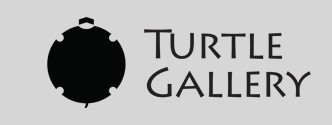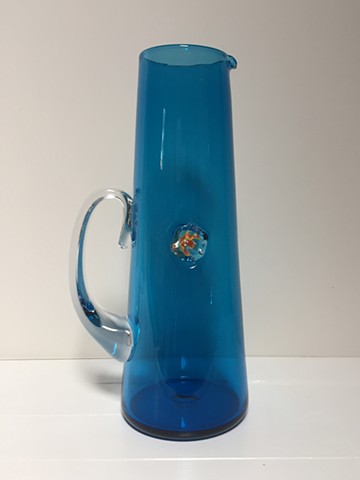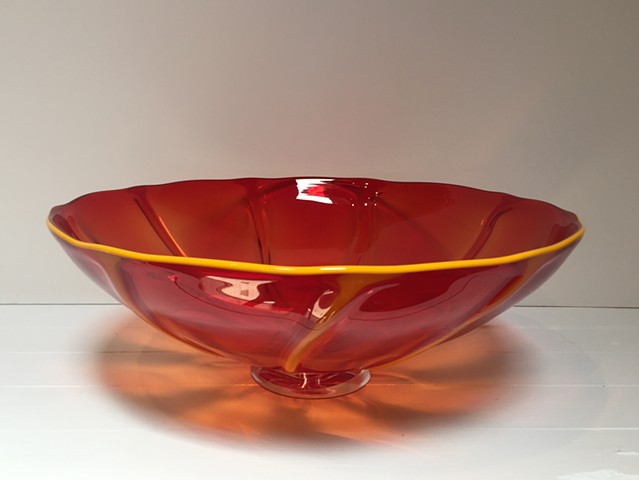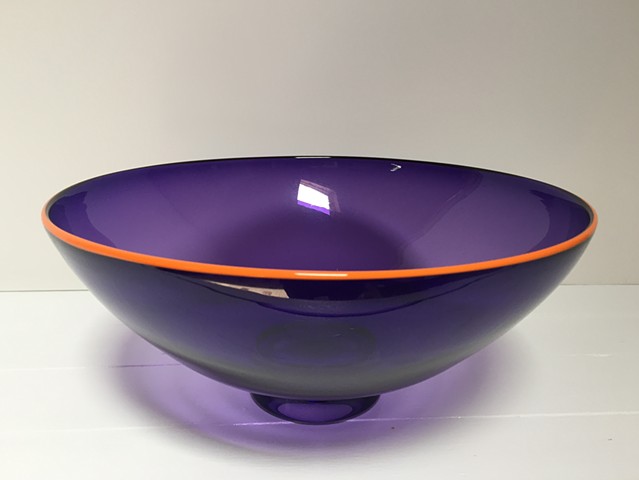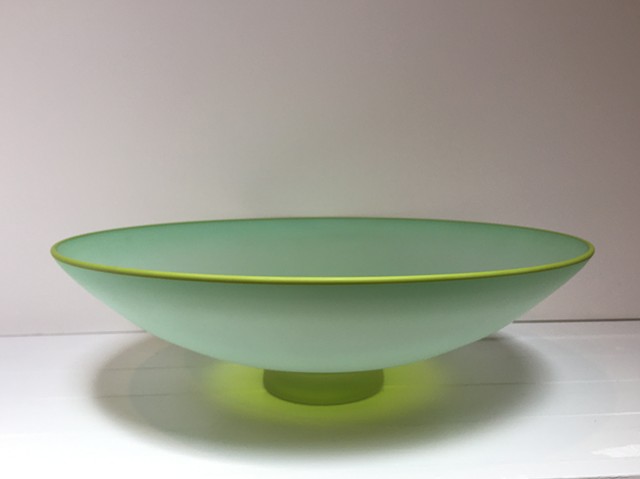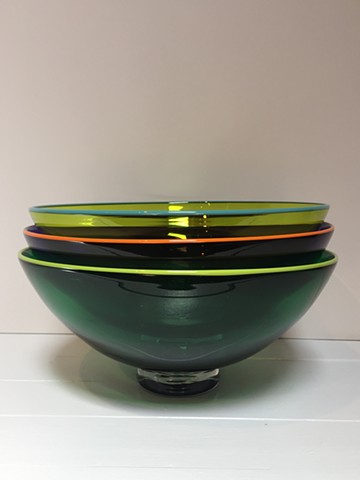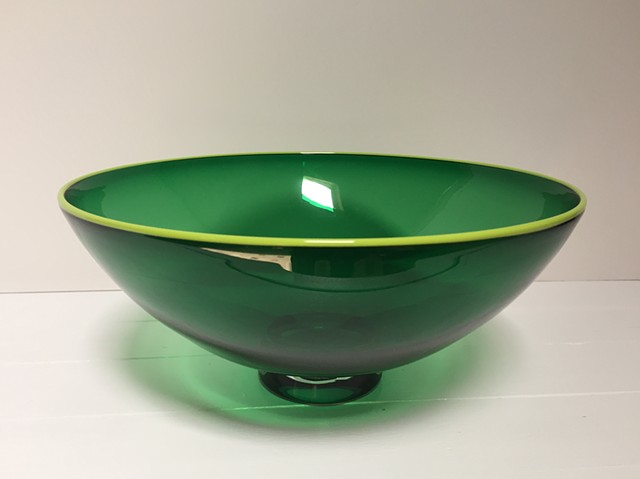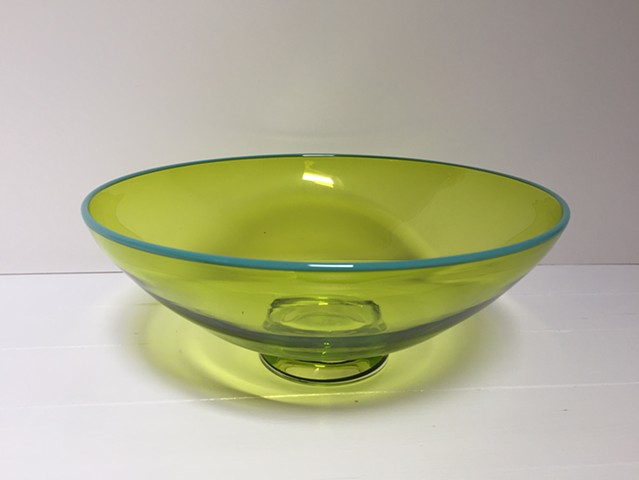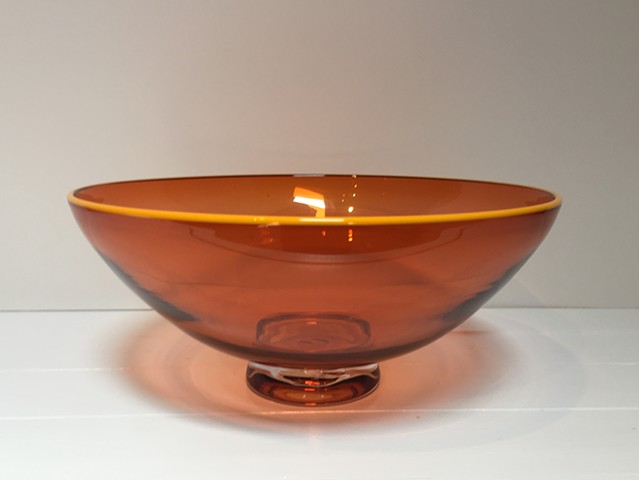Nicholas Kekic
Glass is a fascinating, compelling and challenging material with which to work. As a material for expression, its only limitations are the limitations that we create for ourselves. I believe there’s a way to do it in glass, one needs only to find the way. Glass working techniques have evolved for thousands of years. I’ve benefited from those early traditions, borrowing many of those old world techniques to help me to realize my own processes. Glassblowing for me has become a process of taking this super hot liquid and freezing it to room temperature in a controlled but sometimes precarious balancing act of heat, gravity, timing and human intervention in these processes. I find glass most beautiful when worked in such a way that somehow captures and eventually expresses this fluidity as a material while maximizing its unique relationship with color and light. I design my work to be decorative with clean, strong lines in form and color while most of my work is also functional as I’ve often felt most satisfied making things that are both beautiful and useful.
I’m often asked how one starts out on this path. I was lucky enough to be born into a glass-making family. My grandfather worked for forty-two years as an industrial glassworker at General Electric in Cleveland, Ohio. His experience and technical knowledge helped my father, Thomas Kekic, help build the first glass studio and program for R.I.T. in Rochester, NY. Growing up during the early studio art glass movement in America, I was surrounded by hand-made objects and people who worked hard at developing their craft, using raw, natural materials and great effort to bring their creative ideas to life. After my father passed away, I had all but forgotten his glassmaking. So it was only later in my life, at nineteen, that I fully realized my legacy while attending a beginning glassblowing class at Penland School of Crafts in North Carolina, where my father had been some twenty years before. Penland for me came to be a place for discovering my own creative resources. It was there that I developed a new relationship with glass, one where I began to rediscover the value of finely crafted hand-made things, not only as useful and beautiful objects but valuable for the satisfaction one gets in making them. These objects are not only important as expressions of who we are but there’s great importance in experiencing the creative process that brings them to life. Spending time making things that are either beautiful or useful, encourages us to reach into some of what makes us most human. There is greatness in the life of ideas and creativity these processes can generate. It is in this tradition that I believe making, using and appreciating these glass objects brings a richness to our lives that is both unique and precious.
– Nicholas Kekic
